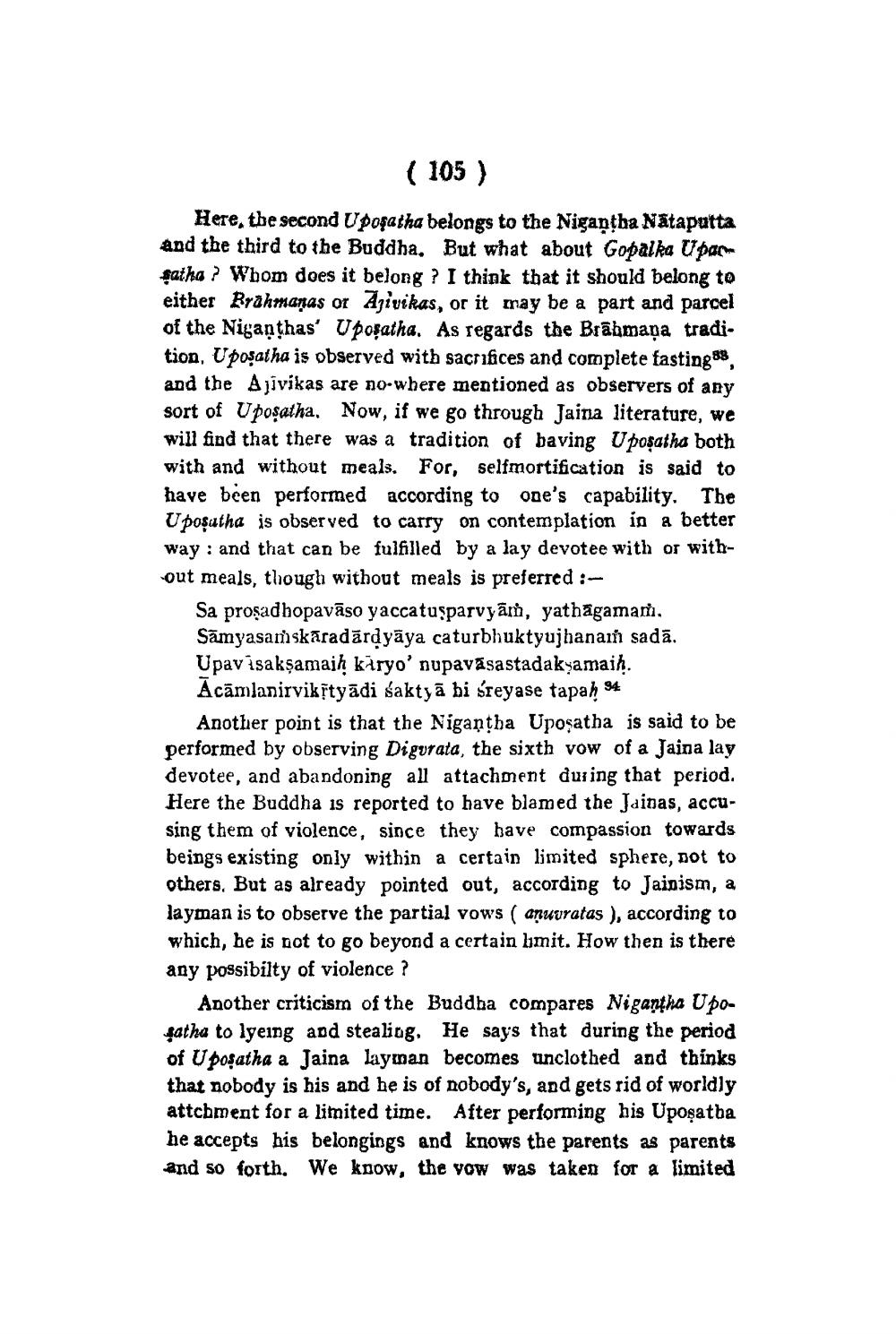________________
( 105 )
Here, the second Upogatha belongs to the Nigantha Nätaputta and the third to the Buddha. But what about Gopalka Upar satha ? Whom does it belong ? I think that it should belong to either Rrahmanas or Aivikas, or it may be a part and parcel of the Niganthas' U posatha. As regards the Brāhmaṇa tradition, Upoşatha is observed with sacrifices and complete fasting 88, and the Ajīvikas are no-where mentioned as observers of any sort of Upoşatha. Now, if we go through Jaina literature, we will find that there was a tradition of baving U posatha both with and without meals. For, selfmortification is said to have been performed according to one's capability. The U posutha is observed to carry on contemplation in a better way: and that can be fulfilled by a lay devotee with or without meals, though without meals is preferred :
Sa proşad hopavāso yaccatusparvyām, yathāgamani, Samyasamskāradārdyāya caturbhuktyujhanam sadā. Upavisakşamajh kiryo' nupavasastadakyamaih. Acāmlanirvikstyādi saktyā bi sreyase tapah 94
Another point is that the Nigantha Uposatha is said to be performed by observing Digurata, the sixth vow of a Jaina lay devotee, and abandoning all attachment during that period. Here the Buddha is reported to have blamed the Jainas, accusing them of violence, since they have compassion towards beings existing only within a certain limited sphere, not to others. But as already pointed out, according to Jainism, a layman is to observe the partial vows ( anuuratas ), according to which, he is not to go beyond a certain limit. How then is there any possibilty of violence ?
Another criticism of the Buddha compares Nigantha Upofatha to lyeing and stealiog. He says that during the period of U posatha a Jaina layman becomes unclothed and thinks that nobody is his and he is of nobody's, and gets rid of worldly attchment for a limited time. After performing his Upoşatba he accepts his belongings and knows the parents as parents and so forth. We know, the vow was taken for a limited




